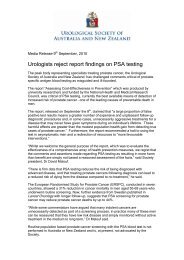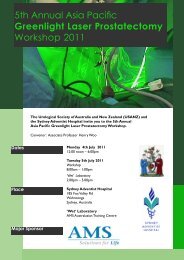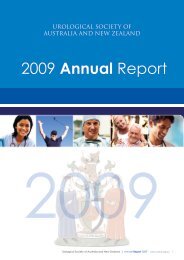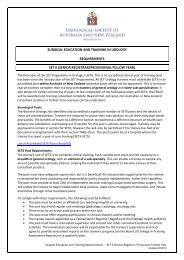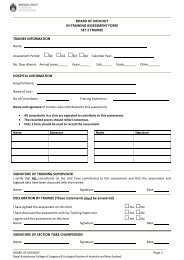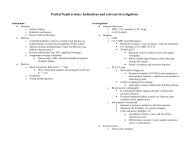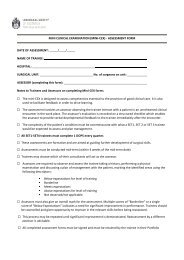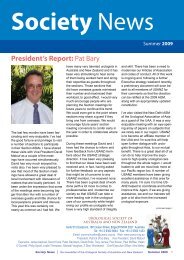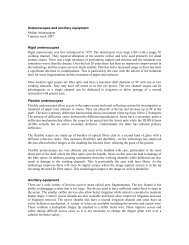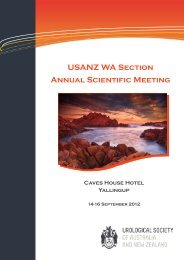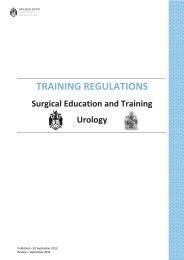CIRCUMCISION OF INFANT MALES
CIRCUMCISION OF INFANT MALES
CIRCUMCISION OF INFANT MALES
Create successful ePaper yourself
Turn your PDF publications into a flip-book with our unique Google optimized e-Paper software.
EXECUTIVE SUMMARY<br />
The Paediatrics & Child Health Division, The Royal Australasian College of Physicians<br />
(RACP) has prepared this statement on circumcision of infant boys for doctors and to<br />
assist parents who are considering having this procedure undertaken on their male<br />
children.<br />
Circumcision of males has been undertaken for religious and cultural reasons for many<br />
thousands of years and it remains an important ritual in some religious and cultural groups.<br />
In Australia and New Zealand, the circumcision rate has fallen in recent years and it is<br />
estimated that currently 10-20% of newborn male infants are circumcised.<br />
Recently there has been renewed debate regarding both the potential health benefits and<br />
the ethical and human rights issues relating to infant male circumcision.<br />
Circumcision is generally a safe procedure but there are risks of minor complications and<br />
some rare but serious complications.<br />
The most important conditions where benefits may result from circumcision are recurrent<br />
urinary tract infections in children; and Human Immunodeficiency Virus (HIV) plus some<br />
other sexually transmitted infections in adults from populations with a high prevalence of<br />
these conditions; cancer of the penis in men with a history of phimosis, and cancer of the<br />
cervix in women whose partners engage in sexual practices known to increase the risk of<br />
Human Papilloma Virus (HPV) infection. The protection against Sexually Transmitted<br />
Infections (STIs) and HIV is less clear-cut in Australia and New Zealand than in high<br />
prevalence countries.<br />
Ethical and human rights concerns have been raised regarding elective infant male<br />
circumcision because it is recognised that the foreskin has a functional role, the operation<br />
is non-therapeutic and the infant is unable to consent.<br />
After reviewing the currently available evidence, the RACP believes that the frequency of<br />
diseases modifiable by circumcision, the level of protection offered by circumcision and the<br />
complication rates of circumcision do not warrant routine infant circumcision in Australia<br />
and New Zealand. However it is reasonable for parents to weigh the benefits and risks of<br />
circumcision and to make the decision whether or not to circumcise their sons.<br />
When parents request a circumcision for their child the medical attendant is obliged to<br />
provide accurate unbiased and up to date information on the risks and benefits of the<br />
procedure. Parental choice should be respected.<br />
When the operation is to be performed it should be undertaken in a safe, child-friendly<br />
environment by an appropriately trained competent practitioner, capable of dealing with<br />
the complications, and using appropriate analgesia.<br />
5



